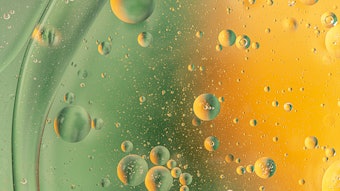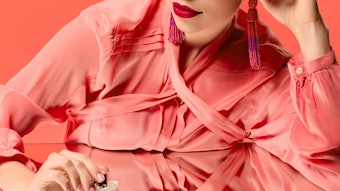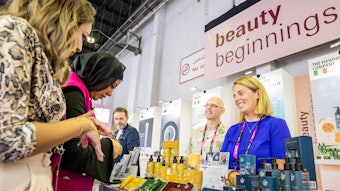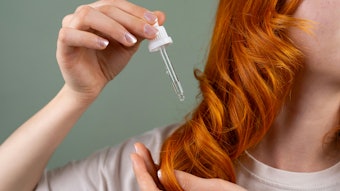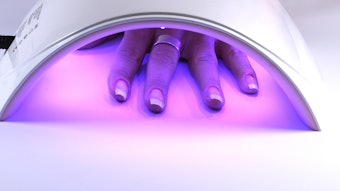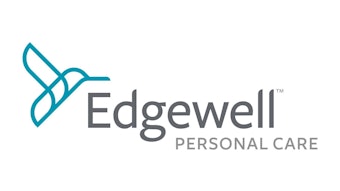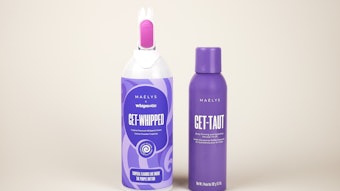- Body wash/shower gel posted $8 billion in sales in 2007. Bar soap saw 24% value growth from 2002–2007, a figure eclipsed by the 58% growth for body wash/shower gel.
- Cleansing is still the primary purpose of bath and body products, but enhancing mood and offering a holistic at-home spa experience have also become key.
- With limited growth potential, deodorant must be imbued with innovative scents, product efficacy or lifestyle identity to drive value growth.
- Men are increasingly turning to body spray products as a fragrance and a supplement to standard perspiration-fighting deodorants.
Manufacturers of bath and body products are faced with both commoditization constraining unit prices and consumers who are far more willing to economize on toiletries than on products such as skin care and color cosmetics. Despite this, the bath and body market segment remains valuable. Sales of bath and body products—comprised of bath and shower products, deodorants and shaving products for both men and women—saw sales top $55 billion in 2007, accounting for almost 20% of global cosmetics and toiletries sales.
Emerging Regions Drive Growth
Greater economic stability brought high levels of growth in disposable income in Latin America—with Brazil, Argentina and Venezuela recording the strongest performances. Low-priced hygiene staples still outsell value-added products, however, this is beginning to change due to the shifting retail landscape—with pharmacies and parapharmacies* quickly expanding across the region. Parapharmacies, in particular, recorded rapid growth and are now present in almost every neighborhood—there are more than 56,000 parapharmacies in Brazil. Big retail chains—led by Onofre, Droga Raia, Drogaria São Paulo, Drogasil and Pague Menos—underwent major changes to offer more room for personal hygiene products, working in favor of products in the bath and body segment. Brazil and Mexico dominate sales, and manufacturers in both countries are looking to nurture a more sophisticated consumer by offering benefits, such as moisturizing formulations, that offer higher margins and can contribute to strong growth.
In Eastern Europe, there have been noticeable differences across the region. Russian and Polish consumers are becoming less price sensitive and more brand loyal, while Hungarian consumers are more price conscious due to the weaker economic situation. Throughout Eastern Europe, many consumers are ready to “overpay” for well-known names, and multinational brands such as Dove, Palmolive and Fa that have continued to be more popular than local brands.
One of the common features throughout the Middle East and Africa has been the shift among consumers from soap to shower gel products. The rising African middle class is a dynamic new consumer group revelling in its newfound wealth and splashing out on Western products that have been well beyond their reach for so long. For this reason, luxury nonessentials, are proving popular—with body wash/shower gels growing by more than 10% in 2007. Moroccans, for example, have become more willing to try new products and new body washes and soaps with additives such as argan oil and fruit extracts, and vitamins and aloe vera have seen sales boom. The Taous, Marsavon, Palmolive and Lux brands, notably, have benefitted.
In all of the emerging regions, deodorants are enjoying strong sales. Penetration rates among new middle income consumers are rising. Women, who are increasingly entering the workplace, are purchasing these products as appearance and grooming becomes more important. For poorer consumers, these products are often used in the place of more expensive fragrances.
Rising disposable income levels are also contributing to the threat facing bar soap, currently the most popular product within the bath and body category. According to Euromonitor International, bar soap sales of $10 billion in 2007 are being rapidly caught by body wash/shower gel, which posted $8 billion in sales. Bar soap saw 24% value growth from 2002–2007, a figure clearly eclipsed by the 58% growth for body wash/shower gel and 55% growth for liquid soap.
While manufacturers in more developed regions are focused on adding value to body wash products, the demand for bar soap remains strong in less developed countries. In India, players continue to innovate. In 2007, Henkel launched Fa Yoghurt Aloe Vera and Fa Yoghurt Vanilla Honey bar soap variants. Key cosmetic and toiletry company Dabur India Ltd. extended its shampoo brand Dabur Vatika into bar soap, and there was a new entry to the market when tobacco manufacturer ITC Ltd. launched Superia bar soap, targeted at mass consumers.
Life Beyond Saturation
In the more developed regions of North America, Western Europe and Australasia, price competition is fierce, brand loyalty is low and private label is a real threat to manufacturers. The challenge for manufacturers in this category is to offer added benefits that will encourage consumers away from budget product lines. Catering to pampering and wellness trends is one way they can achieve this goal. Cleansing is still the primary purpose of bath and body products, but enhancing mood and offering a holistic at-home spa experience have also become key. Aromatherapy claims have thus become commonplace, and formulations are more fragrant, thicker and more luxurious. One of the more eye-catching examples of this trend from 2007 was the launch of Shower Shock in the United States. This bar soap contains caffeine and claims to give users their morning fix while they shower by being the equivalent of drinking two cups of coffee.
With few non-users to convert and limited population growth in most mature countries, deodorant manufacturers are looking toward innovative scents, product efficacy or lifestyle identity to drive value growth. The latter strategy is most prevalent in the men’s spray category, with brands such as Axe/Lynx, TAG and new entrant RGX in the U.S. engaged in a multimedia battle for the adolescent and young men’s share of mind and wallet. RGX, from Dial, even has its own online community at www.rgxlife.com.
Men are increasingly turning to these products as a fragrance and a supplement to standard perspiration fighting deodorants. The fragrance trend has also extended to the women’s category, with exotic scents such as Secret’s Jasmine Orient or Southern Peach. Finally, manufacturers have introduced improved formulations that promise to be more effective, less staining or gentler. All these initiatives have allowed manufacturers to charge more for a unit of deodorant, contributing to rising sector value.
Megabrands vs. Private Label
Procter & Gamble and Unilever together account for more than a third of total sales of bath and body products, according to Euromonitor International. The development of megabrands has made these companies particularly successful at a global level, with many of their leading bath and body brands being easily recognizable by consumers across the globe. P&G’s Gillette brand and Unilever’s Dove, Rexona and Axe/Lynx brands are successfully gaining share year-on-year.
Smaller local and niche operators posed no real trouble to leading manufacturers, but were able to post some impressive results in 2007. Turkish company Evyap Sabun Yag Gliserin Sanayii ve Ticaret AS saw a double digit increase in global sales, and the company ranked number one in bath and shower products in Turkey, ahead of Colgate-Palmolive and fourth overall. In China, Shanghai Jahwa United Co. ranks fourth, and has been successful with its emphasis on its Chinese heritage. In Brazil, Indústria Matarazzo de Óleos e Derivados ranks third, and the company also emphasizes its local roots to nurture a loyal consumer following
Private label is a growing presence within bath and body products. In developing countries, such as those in the Middle East, consumers are warming up to the idea that the local store’s private label is perhaps of the same quality of mainstream brands but at a fraction of the price. In developed regions, own label products have successfully matched trends shown by the leading brands and offer the same added value properties. Private label has proved itself to be in tune with new trends—such as organics and naturals—and, given the current economic downturn in the U.S. and Western Europe, consumers are likely to be increasingly attracted to lower-priced toiletries.
Reasonable Prospects and Room for the Brave
Bath and body products are expected to grow by 11% in constant value terms during 2007–2012, according to Euromonitor statistics. Asia-Pacific is the region to look out for, as Japan’s stagnating will be overshadowed by the exploding sales in China and India. Total sales of these two countries is expected to surpass that of Japan, currently the leading Asian economy. Growth for Asia-Pacific is forecast at 21% to 2012, and the region will overtake Western Europe as the most valuable global region for bath and body sales.
Despite losing its leading position, Japan should not be overlooked, as it will remain at the forefront of some of the most interesting innovations in the market. In 2006, Kracie Foods Co launched Otoko Kaoru Gum—literally “man scent gum.” The gum contains the active ingredient geraniol, which claims to create a rose scent to help mask body odor, and targets men in the late 20s to 50s age bracket. Initial sales outstripped supply, and the company launched a new flavor in 2008, as well as developing a female variant. With a retail selling price of just under $1.50 per pack, could such a product take sales from traditional deodorants in the future?
* Defined by Euromonitor International as retail outlets that sell mainly OTC health care, cosmetics and toiletries, disposable paper products, household care products and other general merchandise. Such outlets may also offer prescription-bound medicines under the supervision of a pharmacist.
Izaskun Bengoechea is a European research analyst for Euromonitor International.
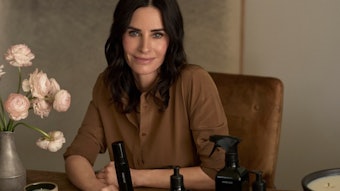
!['Snoopy and Woodstock are cherished [characters] across generations and pairing them with our most-loved body care essentials creates a collection that feels classic with a modern twist. This launch is about celebrating our community with something unforgettable while starting an exciting new era for the brand,' said Luis Garcia, Chief Marketing Officer.](https://img.gcimagazine.com/mindful/allured/workspaces/default/uploads/2025/10/tree-hut-peanuts-fullcollection-fall26-1x1-1253.lGcuurUszp.jpg?auto=format%2Ccompress&fit=crop&h=191&q=70&w=340)
